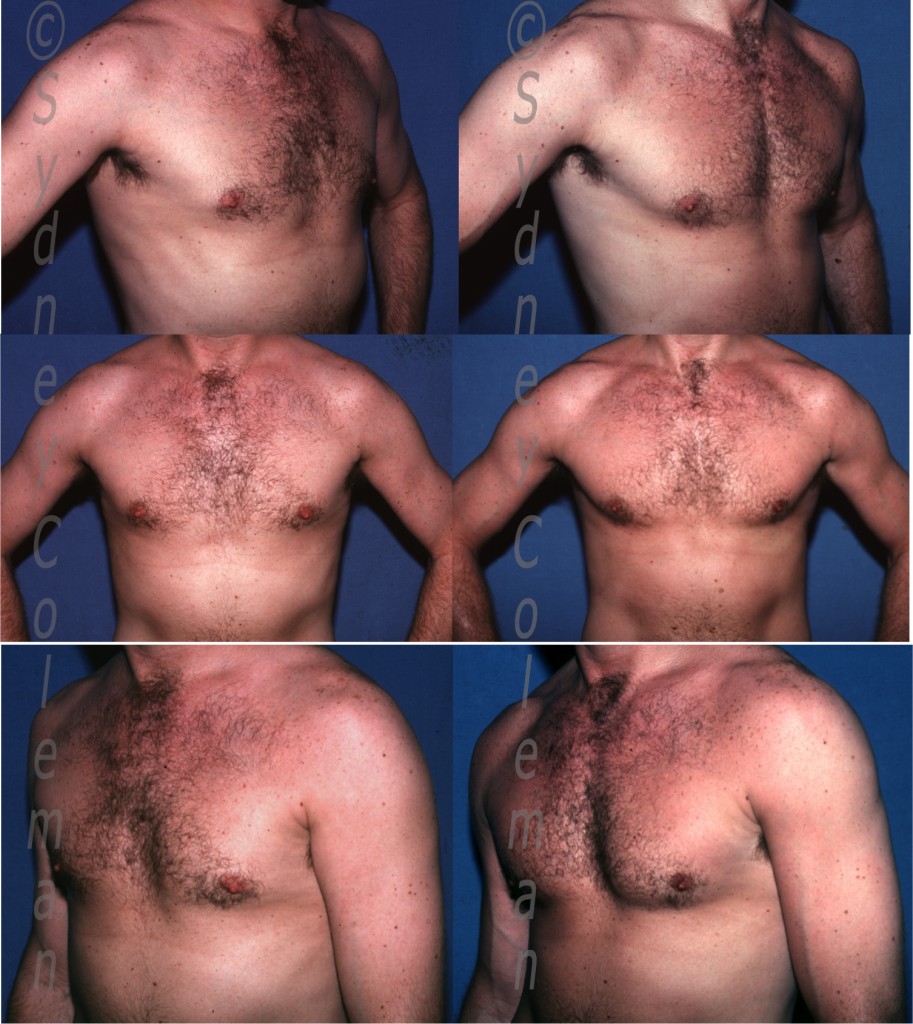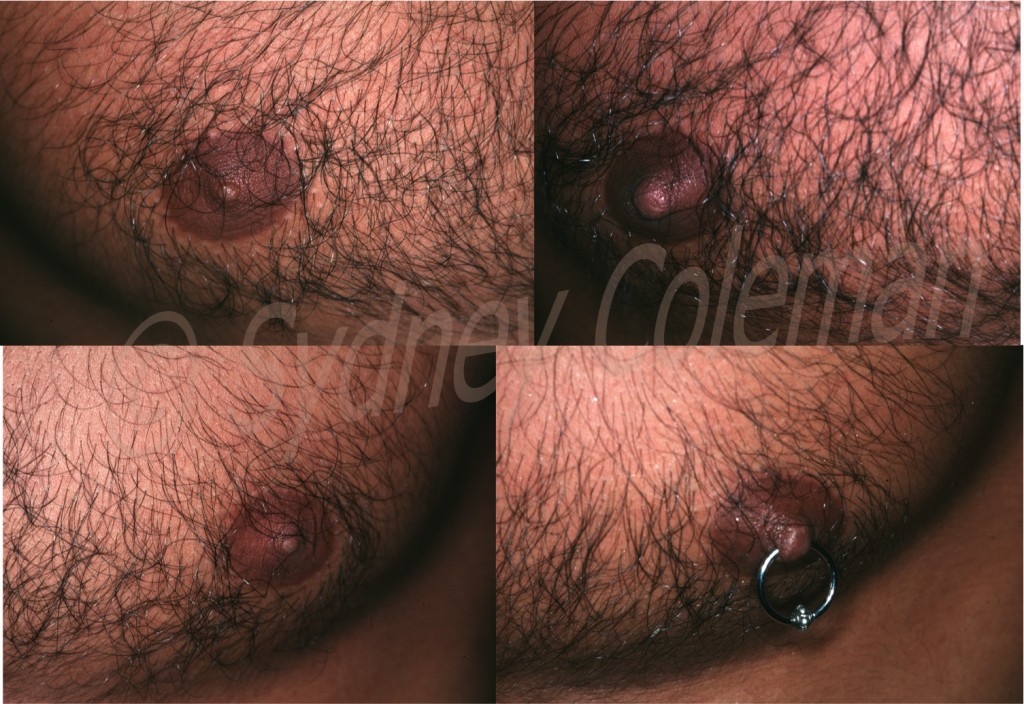Male Chest
Pectoral Implants
We usually think of the female chest when talking about plastic surgery, however, men have problems and concerns that are amenable to improvement with procedures as well. For instance, men who have not been able to achieve the muscular chest they desire through diet and weight training can enhance the pectoral area by adding fat into the muscle itself. Grafted fat can be used to enlarge the muscle as well as produce more definition of the central chest and a sharper demarcation of the lower border of the chest. Fat is typically harvested from a donor site in the abdomen, lovehandles or flank and transplanted to the chest. Recovery is limited by pain in the donor sites, but most patients can resume work in a few days. Patients are asked to limit upper body activity (no upper body work-outs or weight-lifting) for about 2-3 weeks after surgery, and final results are seen in 3 months. However, most patients will look good 3 weeks after surgery.
Gynecomastia New York City
Another problem that men can experience is too much fat and/or breast tissue in the chest and/or under the nipples, known as gynecomastia. There are many causes for this condition, the most common of which are obesity, hormonal changes due to aging, genetic disorders and certain medications. The condition can be profoundly troubling, and affect a man’s self-image. The treatment of this condition is to remove the excess fat and breast tissue with either suctioning or excision. When the tissue is excised, an incision is generally made around the areola (colored skin around the nipple) and excess tissue is cut out. The skin is closed with sutures (either on the skin or below it). There is some moderate pain afterwards, and activity must be restricted for a couple of weeks, but patients can normally return to work in a day or two. Sometimes the excess tissue can be removed by liposuction only through a very small incision, usually under the breast or in the border of the areola. Recovery from this type of procedure is quite fast.
In our practice, we often see men who have had surgery for gynecomastia, but have had too much breast tissue removed, resulting in an unnatural, deformed appearance. This leaves the chest with unsightly depressions, irregularities and subcutaneous scarring. This deformity is best treated with fat grafting, by placing small volumes of fat into the breast to recreate a normal appearing masculine chest. The same procedure can be used to correct defects or scars from injuries or surgeries, such as biopsies or removal of cancerous lesions.
Another condition we see is a congenital condition called pectus excavatum, more commonly known as “flail chest”, “sunken chest” or “funnel chest.” This occurs when part of the sternum (breastbone) and some of the ribs develop abnormally, causing the chest to appear concave, or sunken. Fat grafting can be used to at least partially correct the sunken areas and provide a more natural, normal contour.
For more information about LipoStructure procedure, please click here.
For more information about your initial consultations, please click here.

